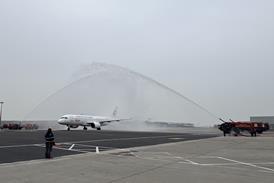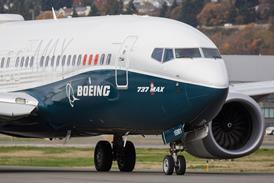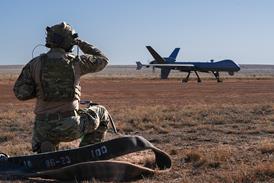By signing its £975 million ($1.9 billion) deal to buy K&F Industries, Meggitt is following in the well-worn footsteps of UK-based aerospace and defence companies expanding in the US market. But while the likes of BAE Systems, Smiths Aerospace and Cobham make no secret of the fact that they are targeting the lucrative US defence market, and aiming to achieve a greater proportion of dollar-based costs, Meggitt's management insists that its reasons for taking over the New York state-based organisation, which operates primarily in the civil market, are different.

"Their products are a good fit with ours - together we can offer better products at a lower cost," says Meggitt chief executive Terry Twigger. "The technology developments in both businesses are complementary - the strengths complement each other. We can pick the best bits of each business," he adds.

K&F's Aircraft Braking Systems business unit, which is located in Ohio, has a 20% share of the global wheels, brakes and brake-control systems market including a 44% share of the market for regional aircraft (see graph). It supplies equipment for the Airbus A321, Boeing MD-80, Bombardier CRJ family, Embraer 170/190, Fokker 100 and other jet and turboprop aircraft. K&F's activities also include the supply of flexible aircraft fuel tanks for military aircraft and helicopters.
Crucially, the deal gives a major boost to Meggitt's aftermarket business. Around three quarters of K&F's revenues come from the aftermarket, and the deal will boost the proportion of Meggitt's aftermarket sales from just under 40% to almost half.
The financial world seems satisfied - both with the deal itself, which will partly fund the takeover through a one-for-two rights issue to raise £424 million, with the rest coming from debt financing - and with the strategic plan behind the move. The success of Meggitt's last major deal, the purchase of Dunlop Aerospace, has reassured investors that this transaction will be similarly successful. Much of Dunlop's technology will be complementary to K&F products.
Twigger insists the attraction of a dollar-based company is not at the top of the list of Meggitt's priorities. But nonetheless analysts are pleased that the company is opening itself up to a greater degree of natural hedging. And Twigger admits that the deal "provides a very useful back-up [against exchange rate fluctuation]. It is very useful when the exchange rate goes against the euro to be able to match revenues in dollars with dollar-based costs." The company is not planning to take the more drastic step of transferring any of its production to the USA for the time being, although Twigger concedes: "If the exchange rate significantly deteriorated from a European perspective it is one of the options we would have to look at."
Understandably, the release of Meggitt's full-year results was somewhat overshadowed by the announcement of the deal. But the company showed significant growth. In the year to 31 December 2006 Meggitt's aerospace equipment division turned in revenue 9% higher than the previous year at £357 million. Aerospace equipment accounts for 53% of Meggitt's overall sales. The addition of K&F will see the company making a large step up in size: K&F posted a 2006 operating profit of $146 million on turnover of $424 million, but Twigger plays down the significance: "We want to expand the company's size, but growth for growth's sake is not one of our objectives," he says, adding that the true advantages of the deal are strategic benefits for customers and shareholders.
There may still be some hurdles for Meggitt to clear before the deal is rubber-stamped. "Although Meggitt management was confident that the deal with K&F should not create material antitrust issues, we would be slightly more cautious on this," says analyst Ben Fidler of Deutsche Bank. "The combination of Dunlop and K&F will create a combined group with a number one market position in both regional jet and business jet brake markets. Although this could cause issues, an antitrust decision is not clear cut in our view since there are no barriers for other braking players to enter these markets if they wished longer-term to restore competition - notably Goodrich and Safran, which are currently much more focused on large jet brakes," he adds. But Twigger is confident: "We don't enter into a deal of this size without considering the requirements of authorities in all jurisdictions and being confident we can satisfy them."
Twigger says it is business as usual for the two parties once the deal goes through. No changes to production strategy are anticipated as a result of the deal, but "we will get the teams working together". Finding a way to tease out the advantages of complementary technologies will be crucial if Meggitt is to achieve the annual cost savings of £16 million by 2009 it plans to generate from the acquisition.
Source: Flight International




















